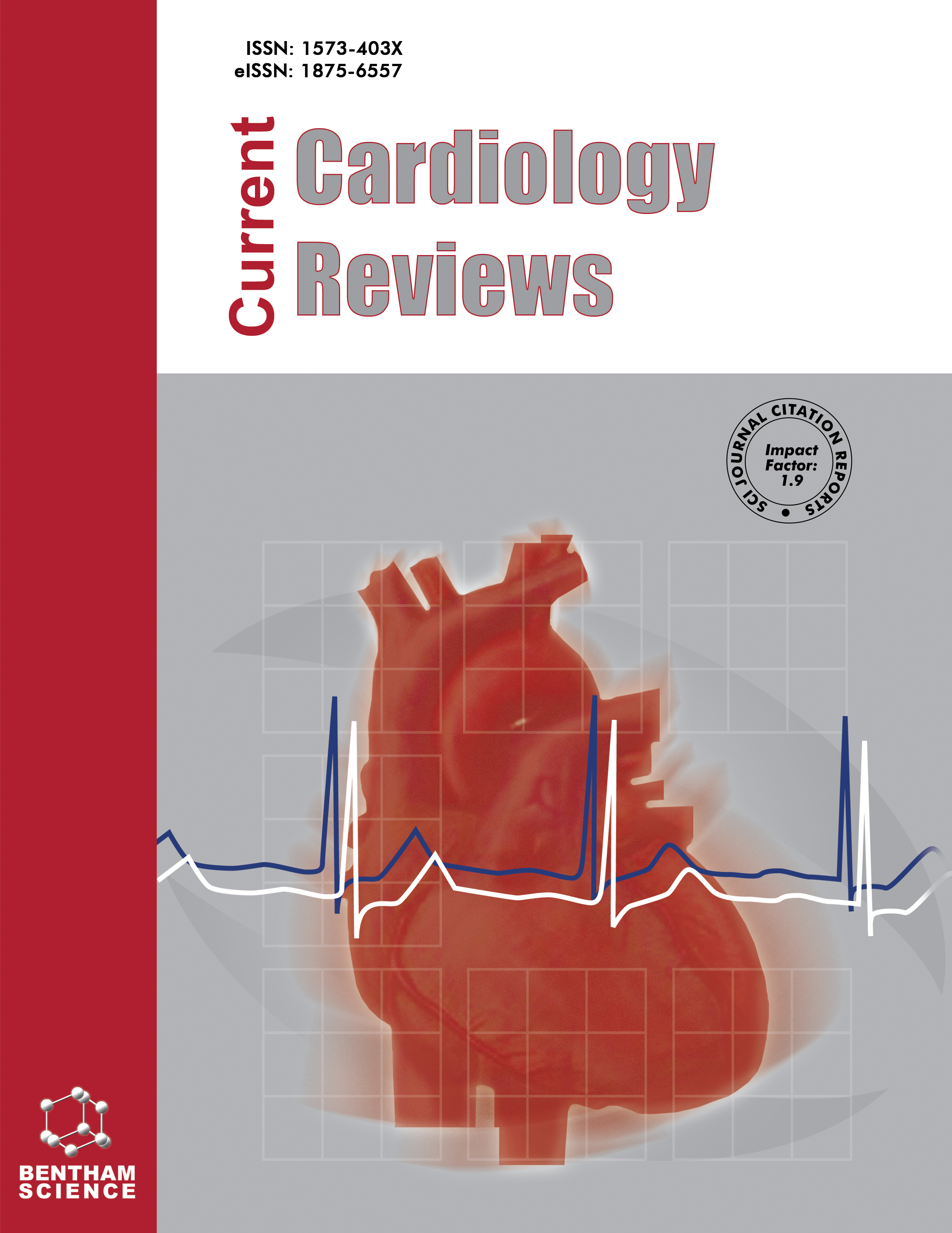- Home
- A-Z Publications
- Current Cardiology Reviews
- Previous Issues
- Volume 6, Issue 2, 2010
Current Cardiology Reviews - Volume 6, Issue 2, 2010
Volume 6, Issue 2, 2010
-
-
The Role of Asymmetric Dimethylarginine (ADMA) in Endothelial Dysfunction and Cardiovascular Disease
More LessAuthors: Latika Sibal, Sharad C Agarwal, Philip D Home and Rainer H BogerEndothelium plays a crucial role in the maintenance of vascular tone and structure. Endothelial dysfunction is known to precede overt coronary artery disease. A number of cardiovascular risk factors, as well as metabolic diseases and systemic or local inflammation cause endothelial dysfunction. Nitric oxide (NO) is one of the major endothelium derived vaso-active substances whose role is of prime importance in main Read More
-
-
-
Genetics of Congenital Heart Disease
More LessAuthors: Ashleigh A. Richards and Vidu GargCardiovascular malformations are the most common type of birth defect and result in significant mortality worldwide. The etiology for the majority of these anomalies remains unknown but genetic factors are being recognized as playing an increasingly important role. Advances in our molecular understanding of normal heart development have led to the identification of numerous genes necessary for cardiac morphogenesis. Thi Read More
-
-
-
Myocardial Perfusion SPECT Imaging in Patients after Percutaneous Coronary Intervention
More LessCoronary artery disease (CAD) is the most prevalent form of cardiovascular disease affecting about 13 million Americans, while more than one million percutaneous transluminal intervention (PCI) procedures are performed annually in the USA. The relative high occurrence of restenosis, despite stent implementation, seems to be the primary limitation of PCI. Over the last decades, single photon emission computed tomog Read More
-
-
-
Current Concepts Underlying Benefits of Exercise Training in Congestive Heart Failure Patients
More LessAuthors: Maqsood Elahi, Mohsin Mahmood, Ahmad Shahbaz, Naveed Malick, Jawad Sajid, Sanjay Asopa and Bashir M. MatataThe pathophysiology of several conditions including heart failure is partly attributable to a failure of the cell energy metabolism. Studies have shown that exercise training (ET) improves quality of life (QOL) and is beneficial in terms of reduction of symptoms, mortality and duration of hospitalization. Increasingly, ET is now achieving acceptance as complimentary therapy in addition to routine clinical practice in patients Read More
-
-
-
Impact of Fenofibrate on Type 2 Diabetes Patients with Features of the Metabolic Syndrome: Subgroup Analysis From FIELD
More LessGiven evidence of increasing prevalence in developed and developing countries, as a result of obesity trends and sedentary lifestyles, the metabolic syndrome represents an increasing burden on healthcare systems. Management guidelines for dyslipidaemia have primarily focused on LDL-C reduction; however, this approach fails to sufficiently address other lipid abnormalities associated with the metabolic syndrome. Atherog Read More
-
-
-
Physiologic Tailoring of Treatment in Resistant Hypertension
More LessResistant hypertension is a major opportunity for prevention of cardiovascular disease. Despite widespread dissemination of consensus guidelines, most patients are uncontrolled with approaches that assume that all patients are the same. Causes of resistant hypertension include 1) non-compliance 2) consumption of substances that aggravate hypertension (such as salt, alcohol, nonsteroidal anti-inflammatory drugs, licor Read More
-
-
-
Proteomics and Mass Spectrometry: What Have We Learned About The Heart?
More LessAuthors: Shaan Chugh, Colin Suen and Anthony GramoliniThe emergence of new platforms for the discovery of innovative therapeutics has provided a means for diagnosing cardiac disease in its early stages. Taking into consideration the global health burden of cardiac disease, clinicians require innovations in medical diagnostics that can be used for risk stratification. Proteomic based studies offer an avenue for the discovery of proteins that are differentially regulated during disea Read More
-
-
-
Cardiac MRI in Infiltrative Disorders: A Concise Review
More LessCardiac MR imaging is an effective method for noninvasive imaging of the heart. The technology has been limited in the past because of imaging difficulties associated with cardiac motion. In recent years, however, cardiac MR imaging has broadened its spectrum of applications in cardiovascular disease with impressive advances in spatial and temporal resolution and increased imaging speeds. This review presents Read More
-
Volumes & issues
-
Volume 21 (2025)
-
Volume 20 (2024)
-
Volume 19 (2023)
-
Volume 18 (2022)
-
Volume 17 (2021)
-
Volume 16 (2020)
-
Volume 15 (2019)
-
Volume 14 (2018)
-
Volume 13 (2017)
-
Volume 12 (2016)
-
Volume 11 (2015)
-
Volume 10 (2014)
-
Volume 9 (2013)
-
Volume 8 (2012)
-
Volume 7 (2011)
-
Volume 6 (2010)
-
Volume 5 (2009)
-
Volume 4 (2008)
-
Volume 3 (2007)
-
Volume 2 (2006)
-
Volume 1 (2005)
Most Read This Month
Article
content/journals/ccr
Journal
10
5
false
en


